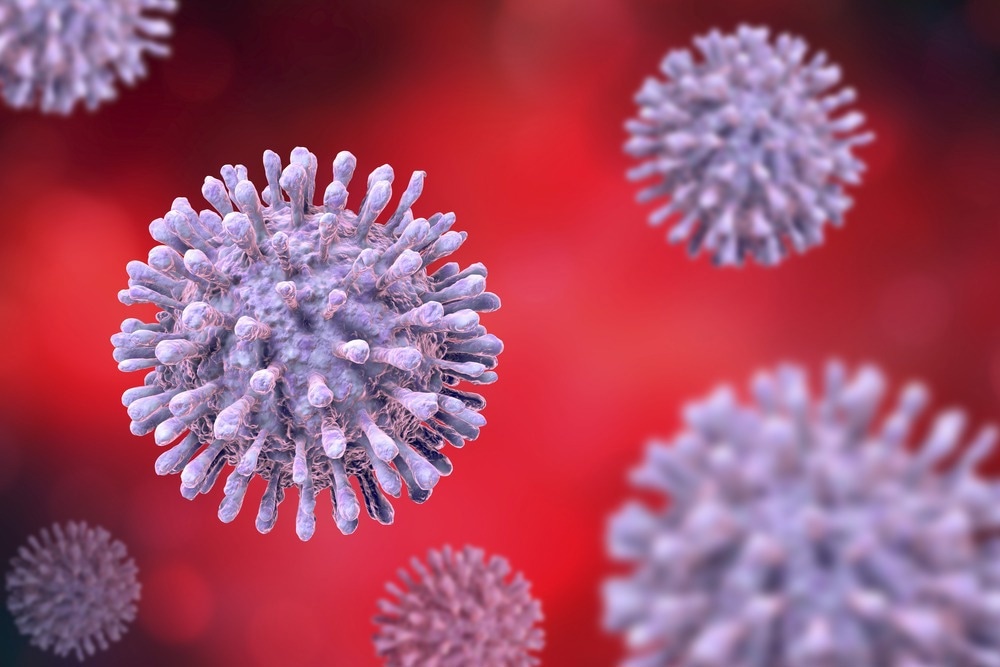In a recent preview published in Cell Host & Microbe, researchers provide insight into the interaction between T lymphocytes and persisting reservoirs of the human immunodeficiency virus (HIV), with repercussions for harnessing effective, long-lasting responses to HIV eradication.
 Study: Whack-a-virus: HIV-specific T cells play an exhausting game. Image Credit: Kateryna Kon/Shutterstock.com
Study: Whack-a-virus: HIV-specific T cells play an exhausting game. Image Credit: Kateryna Kon/Shutterstock.com
Background
T-lymphocyte responses are crucial for acute HIV infection care but grow progressively dysfunctional with time. HIV infection causes a complicated interplay between HIV and T-lymphocyte responses that aim to limit viral replication. However, the impact of antiretroviral therapy (ART) limiting viral replication, leaving just a small ''reservoir'' of HIV-infected cells, requires further exploration. The reaction might aid efforts to deploy HIV-specific T lymphocytes to eliminate reservoirs or restrict viral comebacks following ART withdrawal.
About the preview
In the present preview, researchers have elucidated the intricate relationship between ART, HIV, and T lymphocytes.
Impact of antiretroviral therapy on HIV-targeted T lymphocyte repertoire
HIV-targeted T cells can be referred to as "latent reservoirs" in individuals on ART; however, this view ignores underlying difficulties. Despite being mostly short and ineffective, HIV transcripts are ubiquitous throughout ART. Although most of the viral-infected cells are "latent," they may still be detectable by T lymphocytes, which may identify trace levels of antigen. Proviruses with genetic flaws, accounting for most of the infected cells on antiretroviral therapy, are unable to create infectious virions, although a fraction can display HIV epitopes in T lymphocytes.
A knowledge gap exists on how different types of spontaneous human immunodeficiency virus expression, from defective and intact proviruses, stimulate and shape HIV-targeted T lymphocyte responses on ART. Rather than transcriptional start, researchers have shown latency to be primarily caused by barriers to transcript elongation and processing. Each viral ribonucleic acid (RNA)-expressing (vRNA+) cell tested positive for faulty HIV proviruses, emphasizing defective-type proviral genomes as a crucial cause of spontaneous expression.
Researchers used the single-cell RNA flow-fluorescence in situ hybridization (FISH) assay to show that viral RNA-positive cells are phenotypically different yet enhanced within clusters expressing indicators for central memory T lymphocytes and activation, in addition to chemokine receptors defining T-helper [cluster of differentiation 4-positive (CD4+)] differentiation, particularly C-X-C chemokine receptor type 5 (CXCR-5), CC chemokine receptor 4 (CCR-4), and CCR-6. The latter enrichments may represent the outflow of viral RNA-positive cells into anatomic regions that serve as reservoirs for their continued existence.
The frequency of vRNA+ cells was strongly proportional to the length of pre-ART infection, offering a possible hint to their formation and maintenance for future research. While a median of four percent of the cells with incorporated HIV deoxyribonucleic acid (DNA) spontaneously generated viral RNA, it was mostly abortive or short, with only a few cells producing p24 protein.
HIV replication and preservation of T-lymphocyte responses throughout ART
The effect of ART on T lymphocyte responses and HIV expression has been examined. They discovered no significant link between T lymphocyte responses and human immunodeficiency virus DNA; however, the frequency of spontaneous vRNA+ cells was closely connected to HIV-targeted helper T lymphocyte responses, most notably those targeting HIV-negative regulatory factor (Nef) protein. Parallel trends for HIV-targeted cytotoxic T (CD8+) lymphocyte responses were weaker.
The greatest links were found between HIV-targeted T lymphocyte responses and spontaneous HIV-p24 protein synthesis, which was also linked to anti-HIV helper T lymphocytes with a specific phenotypic profile. The post-ART dynamics and morphologies of anti-HIV cytotoxic T lymphocyte responses concerning HIV DNA and cell-associated RNA were studied in Thai patients who started ART in the acute (AHI) vs. chronic (CHI) phases of infection.
The findings showed that cells infected with the human immunodeficiency virus on ART that are transcriptionally active generate antigens that preserve a functioning cytotoxic T lymphocyte reaction. Lower amounts of decay across all HIV-targeted cytotoxic T lymphocytes and groups targeting viral infectivity factor (Vif), Gag, Nef, or P19/Tat were linked to larger reductions in incorporated HIV DNA among CHI patients, indicating that steady cytotoxic T lymphocyte responses propel gradual decreases in the infected cells.
Thymocyte selection-associated HMG BOX (TOX) and T cell factor 1 (TCF-1) transcriptional factors are significantly important for controlling the differentiation of cytotoxic T-lymphocytes between "self-renewing" and "exhausted" or "short-lived." Total HIV deoxyribonucleic acid levels were shown to be negatively associated with the TOX-low and TCF-1-high self-regenerating populations, indicating that interactions with HIV reservoirs drive chronic T lymphocyte fatigue.
Conclusions
Based on the preview findings, following ART, HIV-targeted T lymphocytes continuously interact with infected cells, which may be used to cleanse reservoirs. There are three non-exclusive explanations for why these cells fail to eradicate spontaneously expressed HIV: recent emigration from cytotoxic T lymphocyte-lacking anatomical sanctuaries, incomplete clonal expansion, or recognition that does not result in death.
Continuous activation of T lymphocytes on antiretroviral therapy may prevent HIV-targeted T lymphocytes from developing functional characteristics necessary to regulate viral rebound after ART discontinuation. On the contrary, faulty proviral antigens may stimulate effector HIV-targeted cytotoxic T lymphocyte responses, causing them to destroy cells having intact proviruses at times of spontaneous or medically induced reversal of latency.
Inflammation-induced comorbid disorders found on ART may be exacerbated by persistent HIV-targeted T cell activation. The findings of the preview establish the groundwork for future research into the pathophysiology of HIV infections and curative efforts.